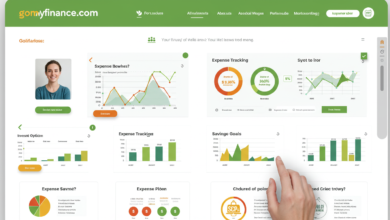
Many people nowadays have poor knowledge of money. Indeed, a lack of financial knowledge may be one of the reasons why many Americans fail to save and invest. Consumer behaviors and financial goods have changed, making it more difficult for Americans to manage their finances. The majority of individuals utilized cash for everyday transactions in the past. They are now more likely to utilize credit cards. Credit payments accounted for 27% of all payments in 2019, up from 24% in 2017. Our shopping habits have also evolved. Many people now prefer to purchase online, making it easy to utilize and overextend credit, an all-too-convenient approach to swiftly acquire debt. Many of the financial difficulties Americans confront may have been averted if financial literacy financial education had been taught sooner. This information lays the groundwork for kids to develop healthy money habits early in life and prevent many of the mistakes that lead to a lifetime of financial difficulties. This is the first in a series of articles examining the present state of financial education in the United States.
What is the definition of financial education?
Financial education is the study of financial matters by children and to equip them with the tools they need to be financially literate. People who have gained financial literacy due to their education are more informed and able to make better financial decisions.
The following are some of the fundamentals of financial education:
Saving – Ensuring that future savings are prioritized.
Budgeting – Understanding how to make and stick to a budget.
Investing — The advantages of long-term investing, such as compound interest.
Credit and Debit – What it means to be in debt and how to manage credit responsibly
Financial safety and security entail safeguarding personal and financial data.
Students who get financial education in school are better prepared to make financial decisions later in life. The European Banking Authority has proposed that the EU prioritize financial education in schools, citing evidence that kids benefit from school-based learning.
What Does a Financial Literacy Course Teach?
It’s critical to educate and empower the next generation on money management. We want our children to outperform the national debt numbers! But, in practice, how do we go about doing that?
Fortunately, personal finance comprises 20% information and 80% conduct. While a financial literacy course must teach money concepts, it’s even more crucial to provide students with a practical strategy for managing their funds. The Five Foundations are simply that: a straightforward strategy for assisting students in managing their funds with confidence.
Recognize the challenges of today’s world.
It’s critical to recognize that today’s youth are maturing and growing up in a very different society from prior generations. While today’s adolescents may not be “trudging 10 kilometers to school, uphill both ways,” they are nonetheless subjected to high levels of stress and societal conceptions that overstate the importance of materialistic ideals. Younger generations may feel a greater desire to “keep up with the Joneses” when rich celebrities and influencers flaunt their high-end lifestyles online. Families may better assist children in looking past the surface and comprehending the necessity of long-term planning by learning what affects the next generation’s daily existence.
The Financial Management Pillars
The key to fostering financial independence in your children is to instill in them an understanding of the five pillars of basic financial management: SAVE (delayed gratification), SPEND (responsible consumption), INVEST (relationship between time, money, risk, and return), DONATE (make a difference with money), and EARN (make a living). The chart below shows several methods and ideas you may utilize at different ages and stages. The five pillars stay stable over time, but the talents get more advanced.
There is an undeniable demand for financial knowledge.
More than half of Americans will not be able to afford a comfortable retirement. Two out of every three households do not have emergency savings, and 78% of individuals live paycheck to paycheck. Student loan debt in the United States has reached $1.7 trillion, while credit card debt in the United States has reached $915 billion, and both are increasing every day. Those figures become even more ominous when seen through the prism of a pandemic. For many Americans, the years 2020 and 2021 have been particularly difficult. According to the National Endowment for Financial Education, seven out of ten Americans had had financial setbacks in the previous year. This shows that financial knowledge is very important for the upcoming generation to don’t suffer in the future.
Teaching youngsters about personal economics can help decrease the wealth gap between black and white people.
Many of the financial difficulties Americans confront may have been averted if financial literacy had been taught sooner. This information lays the groundwork for kids to develop healthy money habits early in life and prevent many of the mistakes that lead to a lifetime of financial difficulties. Nonetheless, access to that education remains uneven, and the consequences are obvious. In 2019, Black households in the United States had a median wealth of $24,100, compared to $189,100 for white families. That implies, according to Yanely Espinal, director of educational outreach at NextGen, not only will the wealth gap between the 1% and the 99 percent widen, but the racial wealth disparity will widen as well.
Earning, Spending, and Savings Lessons
While a topic like financial literacy may appear to be geared for it isn’t. Financial literacy means to know how to manage money responsibly. Begin with age-appropriate instruction when your children are little. Your initial focus should be on learning about money and how it is traded. Children as early as 4 or 5 years old can recognize coins and how they add up to dollars. Early childhood is also an excellent time to educate youngsters about making financial decisions. When they begin doing this, the younger they are, the more comfortable and confident they grow. Point out the price tags on your next trip to the toy store and demonstrate how larger or better items cost more than smaller or basic toys. These early lessons build the foundation for the ones that will follow.



